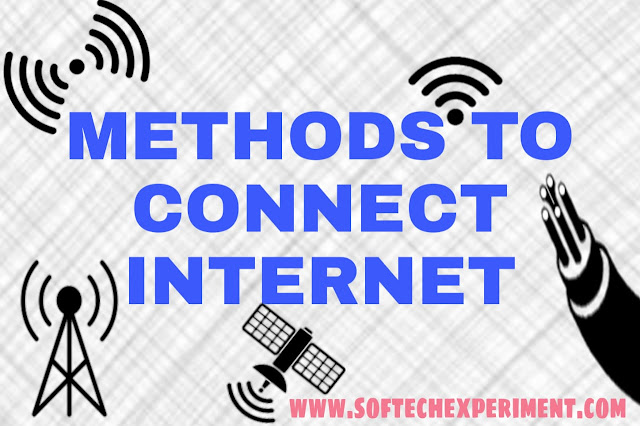WIRELESS
Radio frequency bands are used in place of telephone or cable networks. One
of the greatest advantages of wireless Internet connections is the
"always-on" connection that can be accessed from any location that falls
within network coverage. Wireless connections are made possible through the
use of a modem, which picks up Internet signals and sends them to other
devices.
MOBILE
Many cell phone and smartphone providers offer voice plans with Internet
access. Mobile Internet connections provide good speeds and allow you to
access the Internet.
HOTSPOTS
Hotspots are sites that offer Internet access over a wireless local area
network (WLAN) by way of a router that then connects to an Internet service
provider. Hotspots utilize Wi-Fi technology, which allows
electronic devices to connect to the Internet or exchange data wirelessly
through radio waves. Hotspots can be phone-based or free-standing,
commercial or free to the public.
OPTICAL FIBRE
Fiber optic Internet is the future of broadband. It uses fiber-optic technology to reach the fastest speeds available today, as fast as 10000
Mbps (1Gpbs). Broadband is essential to the modern world we live
in. fiber Internet is blowing its competitors out of the water. In
this guide,
DIAL-UP
Dial-up connections require users to link their phone line to a
computer in order to access the Internet. This particular type of
connection also referred to as analogdoes not permit users to make or
receive phone calls through their home phone service while
using the Internet.
BROADBAND
This high-speed Internet connection is provided through either cable or
telephone companies. One of the fastest options
available, broadband Internet uses multiple data channels to
send large quantities of information. The term broadband is shorthand
for broad bandwidth. Broadband Internet connections such as DSL and
cable are considered high-bandwidth connections. Although many DSL
connections can be considered broadband, not all broadband connections
are DSL.
CABLE
Cable Internet connection is a form of broadband access. Through use of
a cable modem, users can access the Internet over cable TV lines. Cable
modems can provide extremely fast access to the Internet.
SATELLITE
In certain areas where broadband connection is not yet offered, a
satellite Internet option may be available. Similar to wireless access,
satellite connection utilizes a modem.
ISDN
ISDN (Integrated Services Digital Network) allows users to send data,
voice and video content over digital telephone lines or standard telephone
wires. The installation of an ISDN adapter is required at both ends of the
transmission—on the part of the user as well as the Internet access
provider.


0 Comments
Start discussion